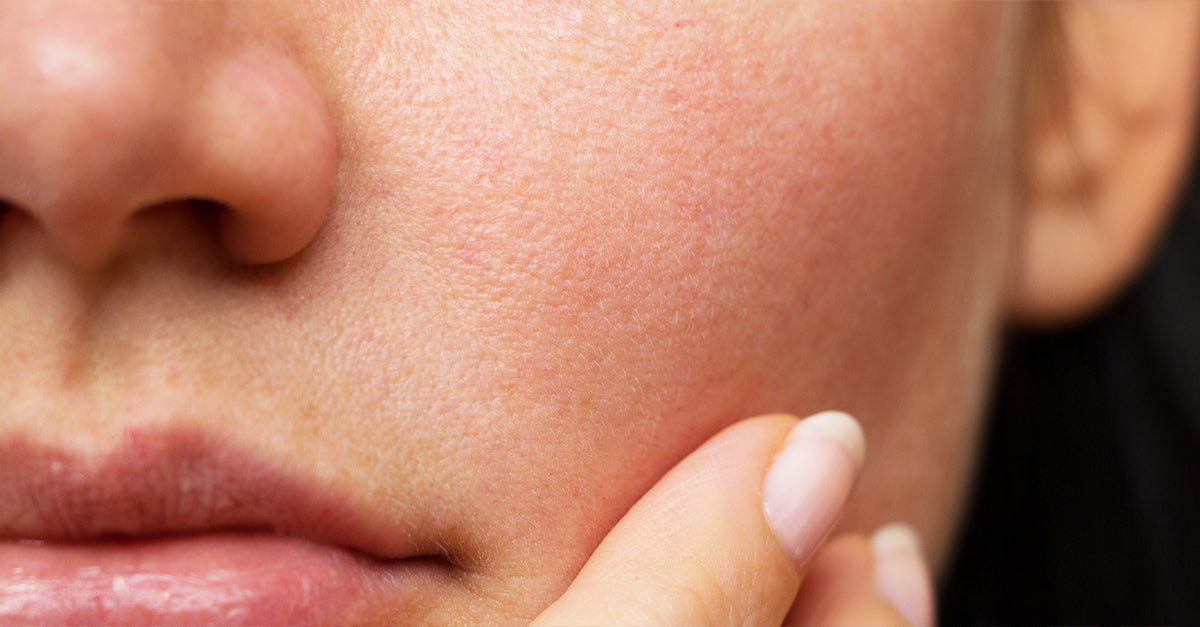Qual é o meu tipo de pele? Aqui está como finalmente descobri-lo!

Este assunto não é novo, e a verdade é que está muito batido. A informação é tanta e tão dispersa, que se torna complicado saber qual é afinal a melhor forma de descobrir o seu tipo de pele, sem a ajuda de um profissional presente.
Para tentar ajudar nesta questão, fizemos um round-up de todos os testes que pode fazer em casa, para tentar descobrir de uma vez por todas qual é o seu tipo de pele.
Não está para isso? Prefere uma forma mais fácil? Preencha o nosso questionário online. Vai-lhe dar de imediato a resposta para qual é afinal o seu tipo de pele e encaminha-a para o respetivo Guia de Cuidados de Pele!
O teste Diário
A forma mais simples de determinar que tipo de pele tem é usar um produto de limpeza suave pela manhã, secar suavemente a pele e deixá-la sem mais nenhum produto durante o resto do dia. Se usa maquilhagem, aplique a sua maquilhagem normalmente. No final do dia, examine a aparência e textura da sua pele, e procure os sinais específicos associados a cada tipo de pele:
Resultados
Tem nenhuma ou muito pouca escamação, ou vermelhidão, ou óleo na pele? A sua maquilhagem está normal, apenas com o desgaste diário das zonas onde tocou mais no rosto? 👉 Pele Normal
A sua pele tem zonas a escamar, ou tem uma sensação de aperto? Teve desconfortável durante o dia? A sua maquilhagem está com um ar escamoso, ou aglomerou-se em zonas secas, fazendo-as destacar? 👉 Pele Seca
A sua zona T está a cintilar, mas o resto da sua cara é maioritariamente normal ou seca? A sua maquilhagem parece que fugiu da testa, nariz e queixo, mas na zona das bochechas está normal ou então agarrou-se a pele seca. 👉 Pele Mista
O seu rosto tem uma aparência oleosa e brilhante? Quando passa o dedo, sente algum óleo na pele, de forma generalizada? A maquilhagem desapareceu quase por completo? 👉 Pele Oleosa
O teste da Lavagem
Semelhante ao teste do dia, mas com menos tempo de observação. A verdade é que o tipo de pele tem tendência a revelar-se bastante rápido!
Lave o seu rosto com um produto de limpeza suave e não aplique qualquer produto ou maquilhagem. Espere 30 minutos e examine como se sente a sua pele.
Resultados
Tem nenhuma ou muito pouca escamação, ou vermelhidão, ou óleo na pele? 👉 Pele Normal
A sua pele tem zonas a escamar, ou tem uma sensação de aperto? Está desconfortável e tem vontade de ir já pôr um hidratante? 👉 Pele Seca
A sua zona T está a cintilar, mas o resto da sua cara é maioritariamente normal ou seca? 👉 Pele Mista
O seu rosto tem uma aparência oleosa e brilhante? Quando passa o dedo, sente algum óleo na pele, de forma generalizada? 👉 Pele Oleosa
O teste do papel absorvente
Depois de lavar o seu rosto com um produto de limpeza suave, deixe-o nu durante três horas. Coloque um pedaço de papel absorvente sobre a testa, o nariz, o queixo e as bochechas durante alguns minutos para determinar o nível de oleosidade.
Resultados
O papel aderiu à pele, mas não tem qualquer mancha oleosa percetível? 👉 Pele Normal
O papel não adere de todo ao rosto? 👉 Pele Seca
O papel adere bem e mostra manchas de óleo apenas na zona T (testa, queixo e nariz)? 👉 Pele Mista
O papel aderiu e nota manchas de óleo ao ser removido? 👉 Pele Oleosa
O teste da pressão
O teste de pressão destina-se a avaliar a elasticidade da sua pele. Basta aplicar pressão sobre a pele do seu rosto e observar a sua elasticidade.
A pele seca é o resultado da falta de óleos e lípidos naturais, que mantêm a sua pele flexível; se a sua pele não ressaltar rapidamente depois de aplicar pressão, provavelmente está seca. Os tipos de pele normal e oleosa voltarão rapidamente ao normal após a aplicação de pressão.